|
|
| For the Kristalunie factory in Maastricht, Carnaval was to be one of the last great successes. Sales were strong in both domestic and international markets. After a major extension of the service (models numbered 15-29b) the factory also updated other in-house patterns and produced them in Carnaval colours. Vases and fruitbowls were (briefly) offered as centrepieces for the Carnaval table. The Carnaval colours were selected from a 1950's palette, but as the '60's arrived, the competition launched similar ranges and brighter colours. Within a few months variant products started to arrive from Belgium and Bohemia. This page looks at designs which are often confused with Verboeket's Carnaval, while our catalogue page contains the main service and legitimate, but lesser-known, variants. For ease of reference we divide non-Carnaval items into three groups, "widows, orphans and bastards": 'Widows' We use the term 'Widows' to refer to designs which were produced in Maastricht in the Carnaval colours, but they do not properly belong to the main stemware service. The designs are diverse, some derived from existing models and others seemingly in response to the changing needs of the consumer. They are often made in pressed glass, and this is doubtlessly reflected in the exact designs. This group includes (from left) coasters (onderzetters), Rozendaal's 'China'pattern pressed compote bowls, Duchesse coupes on saucer, facetted bowls, pressed ice-coupes on foot. |


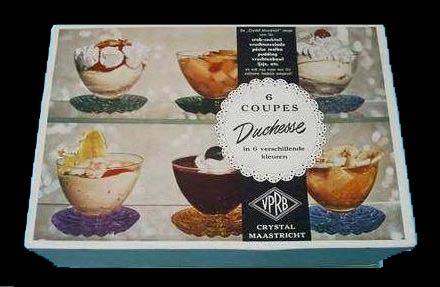
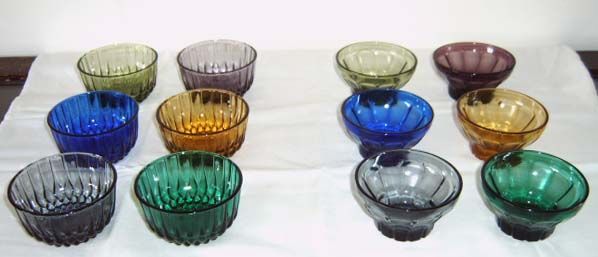
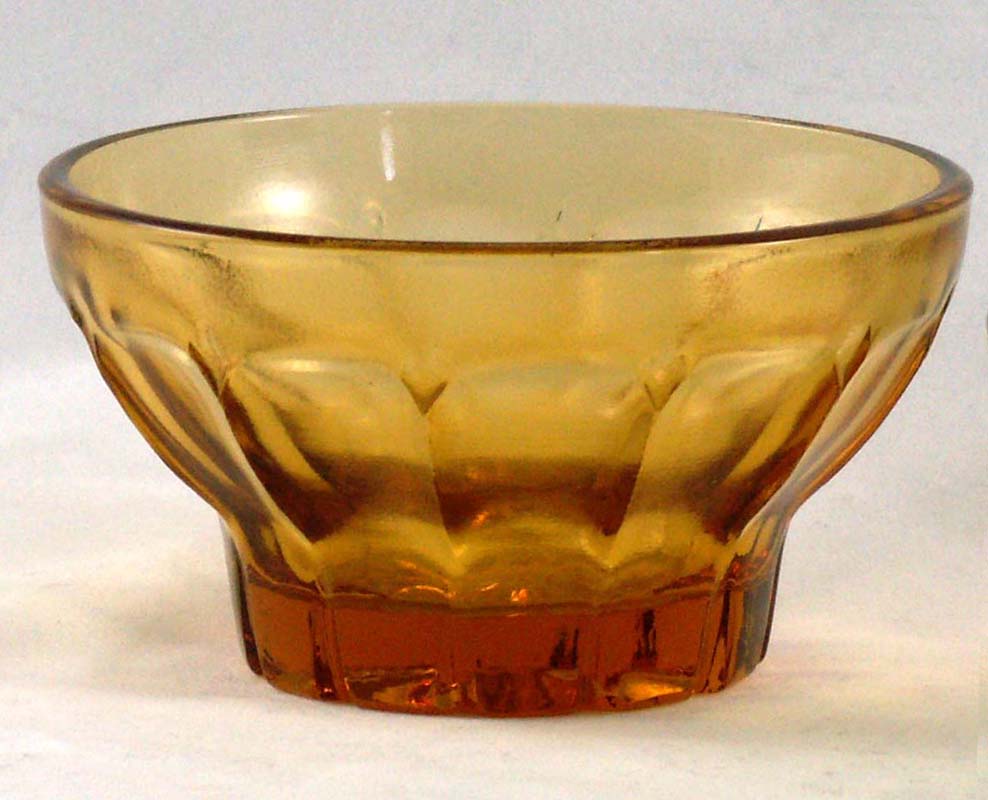
 |
'Orphans' There is a limited amount of documentary evidence available, (and nothing that is conclusive) so collectors must build up their own knowledge from experience to determine which items are 'legitimate' members of the Carnaval family. Many collectors have found examples which seem to be 'nearly correct' but are a slightly different size. It has been suggested that Kristalunie may have changed the sizes during production, but there is as yet no evidence for it. Compote bowls, which are very rare, are often mistakenly identified! (Some are 'fruit bowls' and non-Carnaval fingerbowls by Maastricht.) A typical example from my own collection (see left) shows the problem. The 'real' K6 is the smallest of the three shown. The slightly larger one could be a 'second' or a 'revised size' or (most likely) a product from another factory altogether which is similar to the K6 in every respect except the dimensions. Its dimensions match the Cascade series from Boom, so the mystery is probably explained.  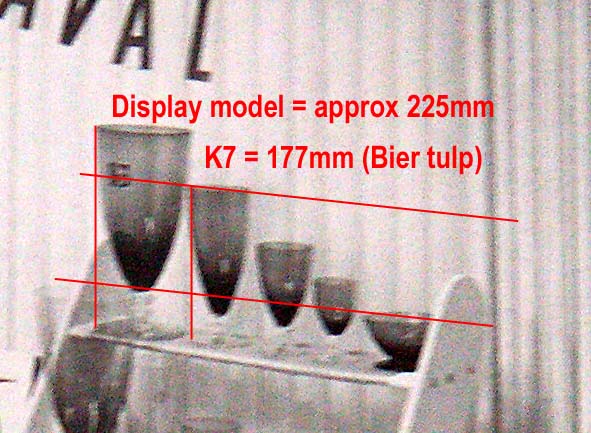 A close look at the pictures from the Huishoudbeurs in 1957, the launch of the Carnaval range, reveals an interesting detail. It is clear that there are 'display versions' of several models, presumably made in giant format to improve the impact of the stand on an audience which may be viewing from several metres away. It seems to be therefore at least a possibility that the largest of the models shown on the left was made by Maastricht for displays in shops, or sold (off catalogue) as a vase. |
| 'Bastards' Refers to the designs which bear no legitimate relationship with Carnaval, and were not made at Maastricht and the similarities were probably not intended to mislead. They include cognac glasses and liquers in a wide range of sizes and colours. Many of them are thought to originate in Belgium where there were many small factories desperately trying to survive the early 60's. Some of the larger factories produced collectable fiestaware in colours which overlapped with Maastricht's pallette, often prefering models such as the balloon cognac glasses and tumblers which could not be protected by the manafacturer. Collectors will be used to finding (particularly cobalt blue and smoke/anthracite) cognac glasses which have become separated from their set. With a single item in your hand, it is very difficult then to be sure of its identity. (Watch out for 'tricky bastards'! Measure carefully in all dimensions if unsure!) 
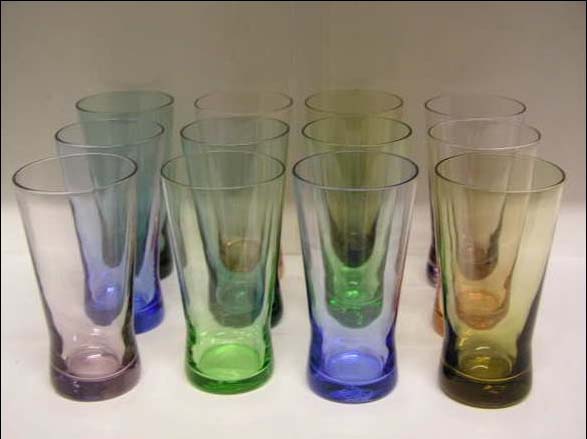
|
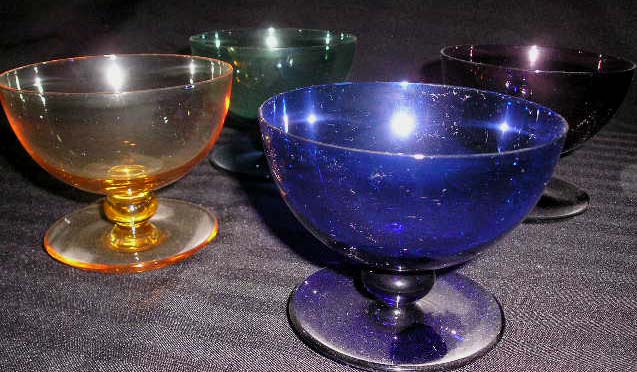
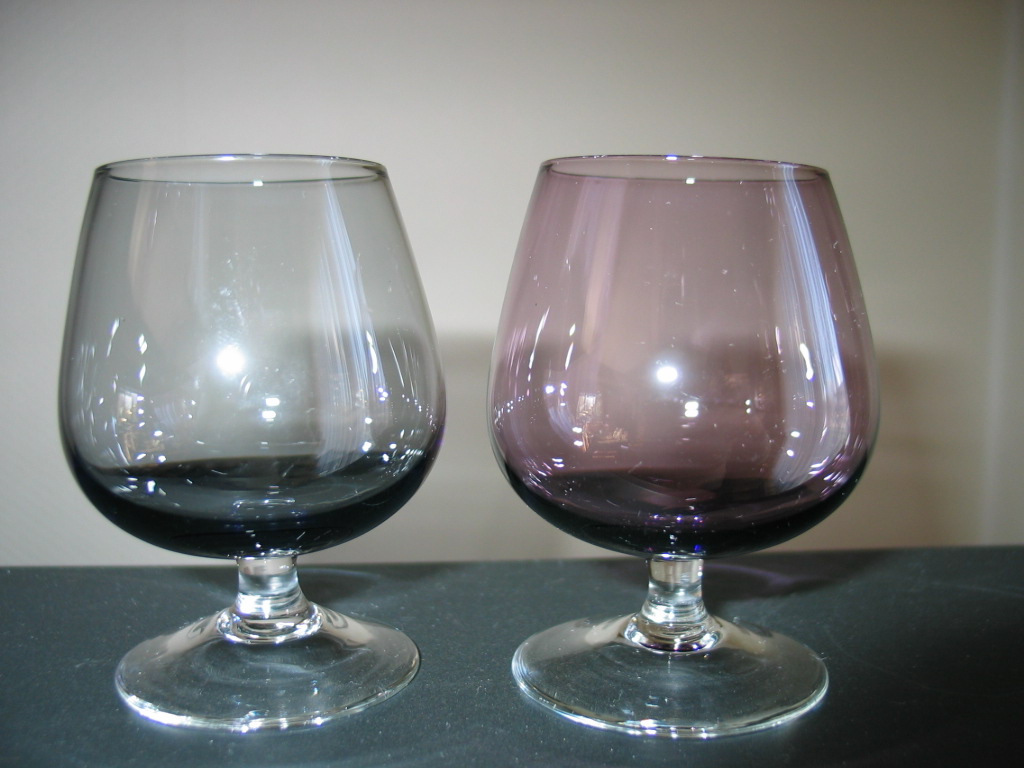 'Lusters and tints'
'Lusters and tints' Factories who emulated the success of Maastricht also made glasses with a range of lustres, and (in later years) moved to transparent tints of colour. They updated and ammended shapes and colours frequently and so documentation is often vague or non-existant. 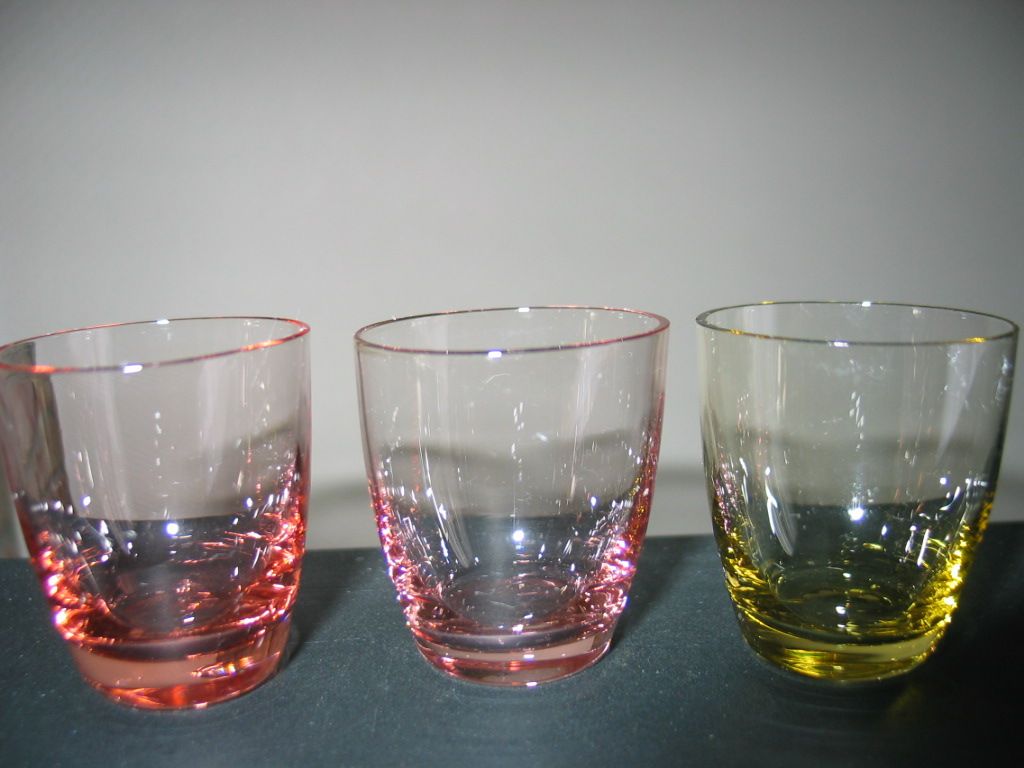
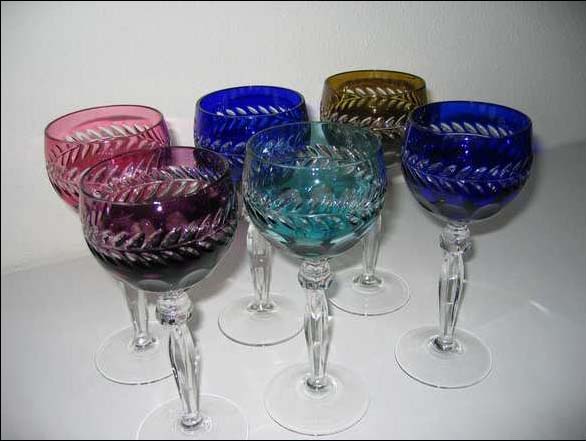
|
|
|
|
Copyright (C) Hogelandshoeve & McLellan-Verhoeven, 2019. All rights reserved and images copyright unless otherwise stated. |